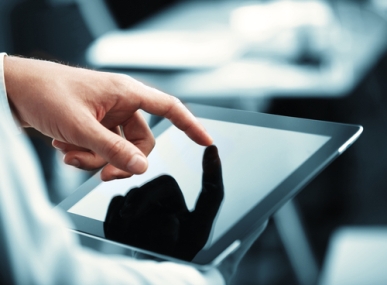The winds of change are roaring through the consumer device industry again, with new combinations of screen size, wearability and portability all coming into play. Mobile phones are getting bigger screens, watches are getting "smart," and tablets are adding in phone support and stretching out. It will be a couple of years before we can declare winners and losers.
Samsung's new Galaxy Mega and Sony's Xperia Z Ultra announced this week are stunning examples of the blurred lines between tablet and phone. The Galaxy Mega boasts a 6.3-inch-long screen while the Sony Xperia Z Ultra has a 6.4-inch screen with an enhanced color LCD display using the same tech Sony puts into its high-end TV sets.
If it was a simple heads-up comparison, the Xperia Z might win in my mind because it is waterproof – a feature all mobile devices should have as standard. However, Samsung is also planning to introduce a smartwatch, and I wouldn't be surprised if the company worked out a bundle of it and the Galaxy Mega, offering an intriguing combination of large phone/near-tablet to slip into a portfolio or suit pocket and Bluetooth-enabled smartwatch to take and place calls, check SMS text messages, and do other light tasks on the fly.

Image via Shutterstock
Another spin with the smartwatch is to bundle it together with a full-fledged tablet (and do we define a tablet as something that just won't fit into a regular-sized pocket given the growth in phone screen size?). In the smartwatch/tablet bundle, the tablet acts as a hotspot of sorts to provide broadband and phone service. About the only drawback here is keeping the tablet encased in a portfolio, rollerbag or backpack may affect cellular signal access in some locations. On the other hand, such an issue might present a design opportunity for manufacturers to provide signal-enhancing carry bags.
Ultimately, I believe laptops with screens up to 15.4 inches will just go away, replaced by tablets with "keyboards" providing charging and extended power, supplemental speakers and additional storage. You'll bring the keyboard battery/storage along for when you need to do more than light work, leave it in the hotel room if you are walking an event floor.
Larger form factors for tablets do have some system trades, however. Larger can mean more weight, such as a bigger battery to power a larger touchscreen. On the other hand, flash storage densities continue to increase while SoCs shrink to take up less space and consume less power. And there's also the down-the-road prospect of ditching 2G and 3G cellular support for an all-LTE based solution to save more power and bring prices down lower.
I'll confess I'm in a quandary as to where Google Glass (GG) fits in with the general consumer crowd. I believe the tech will have to go through a couple of iterations before we can call it mainstream, but a surge of adoption in the 18-24 demographic here in the U.S. and/or in the tech-loving populations of Asia could fuel acceptance. GG will end up rolling into a lot of vertical market and enterprise applications as a flexible platform to displace a patchwork of customized integrator solutions.
Edited by
Alisen Downey  QUICK LINKS
QUICK LINKS